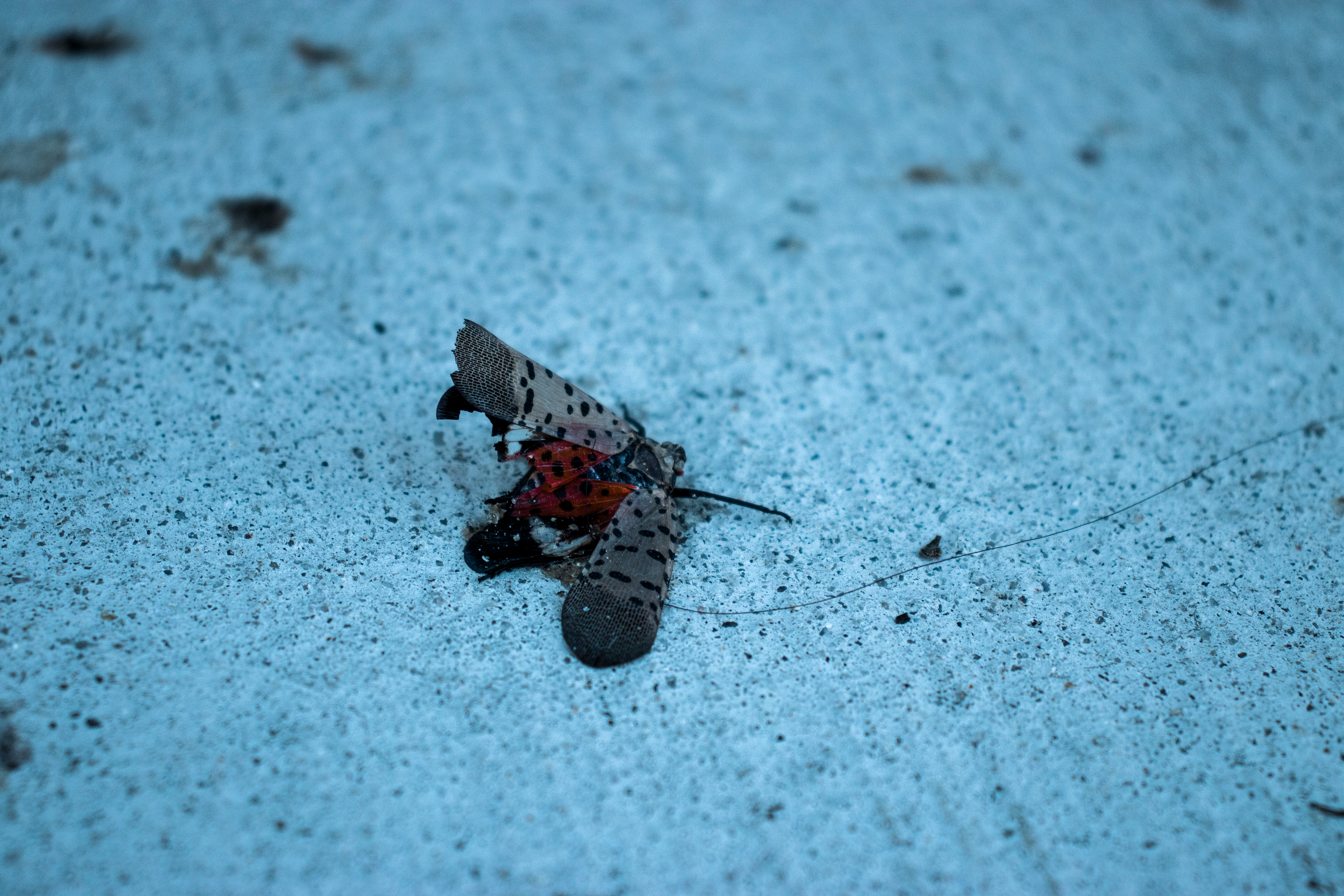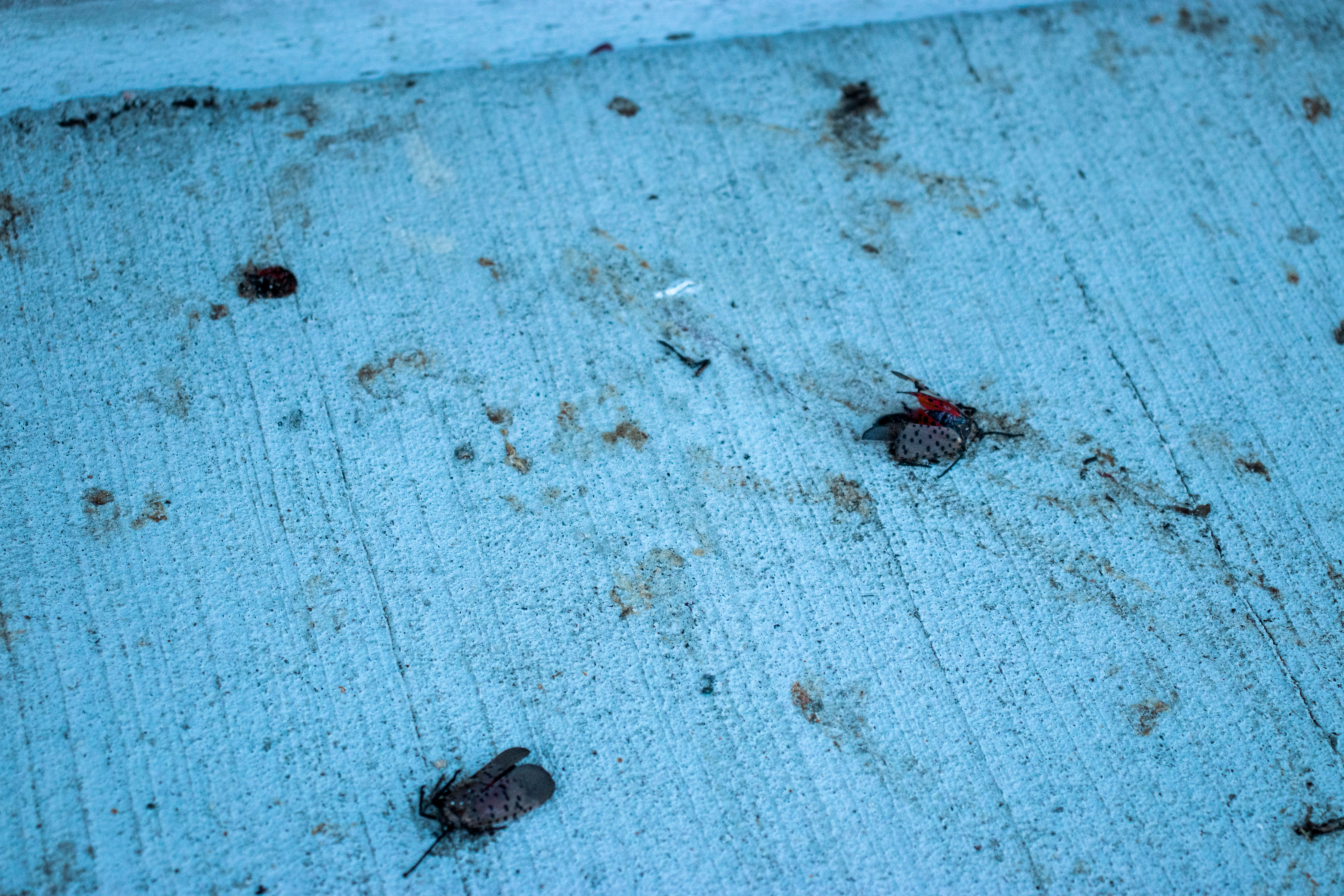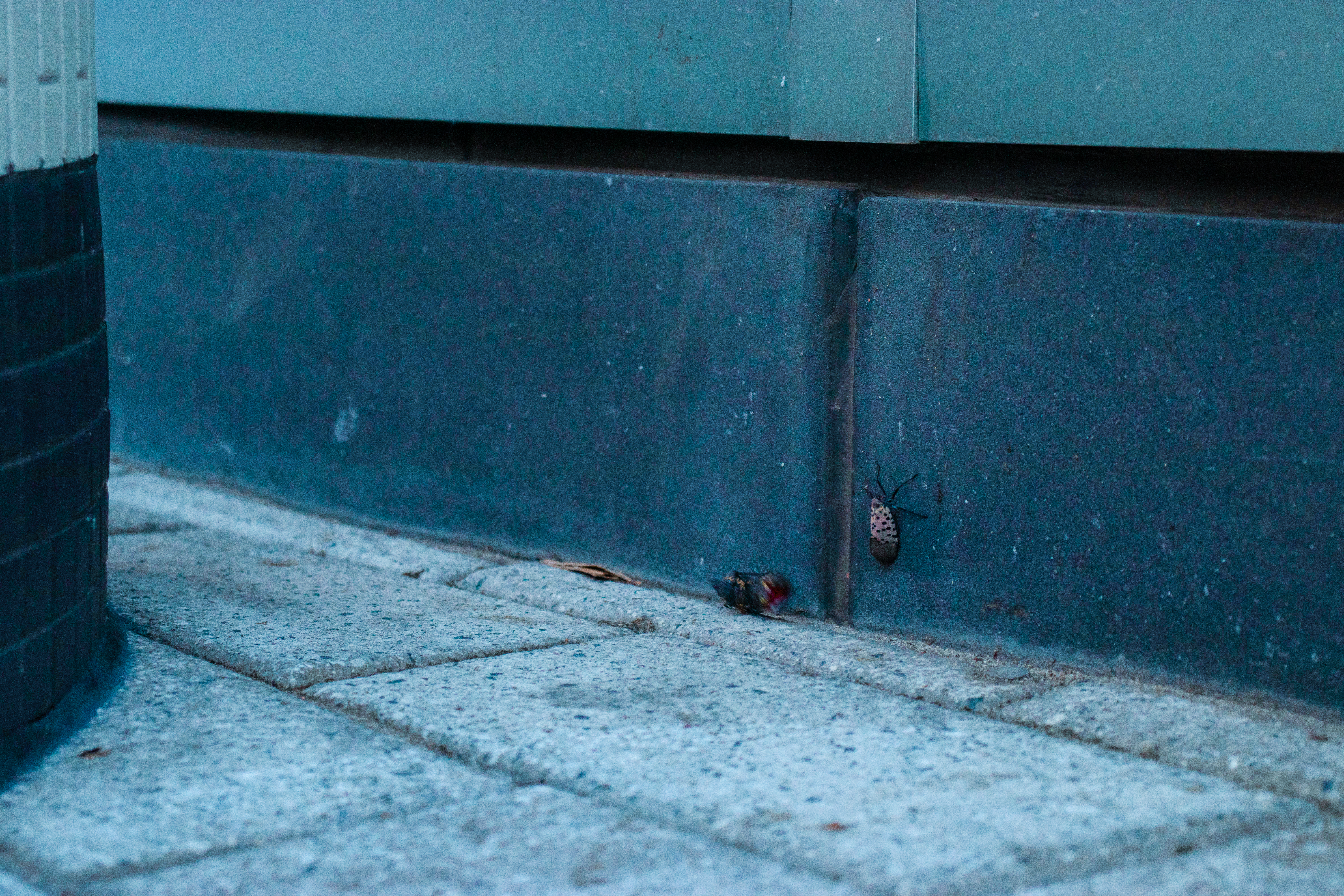Lanternflies have taken over Temple, but students are squishing the bugs every chance they get
Written by Emma Ford, Photographed by Michael Seitzinger
When students returned to campus this fall semester, they were greeted by an unexpected, and rather unpleasant guest. Covering walls, sidewalks, and any other surface they could find were spotted lanternflies. These pesky bugs have become an irritating part of campus life for students, and there seems to be no end in sight. Flying, jumping, and crawling from building to building, the spotted lanternflies have certainly made themselves a home at Temple.
Originating from northern areas of China, Bangladesh, and Vietnam, the spotted lanternfly is an invasive species to the United States. The Pennsylvania Department of Agriculture urges anyone who sees a lanternfly to kill them, and Temple students certainly have no problem with that.

“I think the students on campus have done a great job banding together to fight the bugs,” said Catherine Riggins, a senior public health major.
Riggins finds the lanternflies repulsive, although not necessarily impactful on her time on campus. She takes every chance she gets to smash the bugs, and even follows an Instagram account dedicated to just that.
“I actually follow @templeu_lanternfly_squishers. The entire page is just students killing lanternflies. I think the page is aimed to give people more incentive to kill the bugs on and off campus. They give out prizes and money to people that send in good videos which is also really funny,” said Riggins.
Hannah Gaudelli, a freshman English major, believes that this bug-squishing Instagram account is an attempt to bring some lightheartedness to students during a hard time. However, they also realize the more sober repercussions caused by the lanternfly infestation.
“They’re a bit of a nuisance, but ultimately it is more serious than bugs just being bugs,” stated Gaudelli. “They are invasive, and they harm the current ecosystems and species native to Pennsylvania. They kill trees and eat excessive amounts of sap from both plants and trees.”
In fact, the Pennsylvania Department of Agriculture predicts that if the bug is left uncontrolled, it could cost Pennsylvania over $300 million and nearly 3,000 jobs due to the damage it would wreak on the grapes, apple, hops, and hardwood industries.

The significance of this bug invasion cannot be underestimated, and students are waiting for action from Temple. Gaudelli hopes that Temple, or someone of higher authority, can take the lanternfly issue seriously and regard it as more of an environmental threat than just a pesk.
“Temple hosed down Morgan Hall a few times when the swarm was ridiculously large but other than that, I am not sure what else they are doing,” said Riggins. “I think they are relying on the students to help with the problem. I really hope they hose down more areas of campus soon though because walking by lanternfly corpses is starting to get old.”
Camryn Cobos, a sophomore majoring in both political science as well as communication and social influence, does not think the infestation has become any better since the bugs arrived at Temple.

“Considering maintenance has to use leaf blowers to remove them from outside of buildings, I would say it’s not the most ideal situation,” said Cobos.
While students hope that the irritating critters take their leave from Temple’s campus, they also realize that it may just be a slightly gross and rather humorous part of the Temple experience.
“I just think everyone needs to do their part and kill the lanternflies. There’s not much else we can do,” said Riggins. “But I love walking on campus and watching people mercilessly killing them…absolutely no remorse. It definitely gives me a good laugh!”

